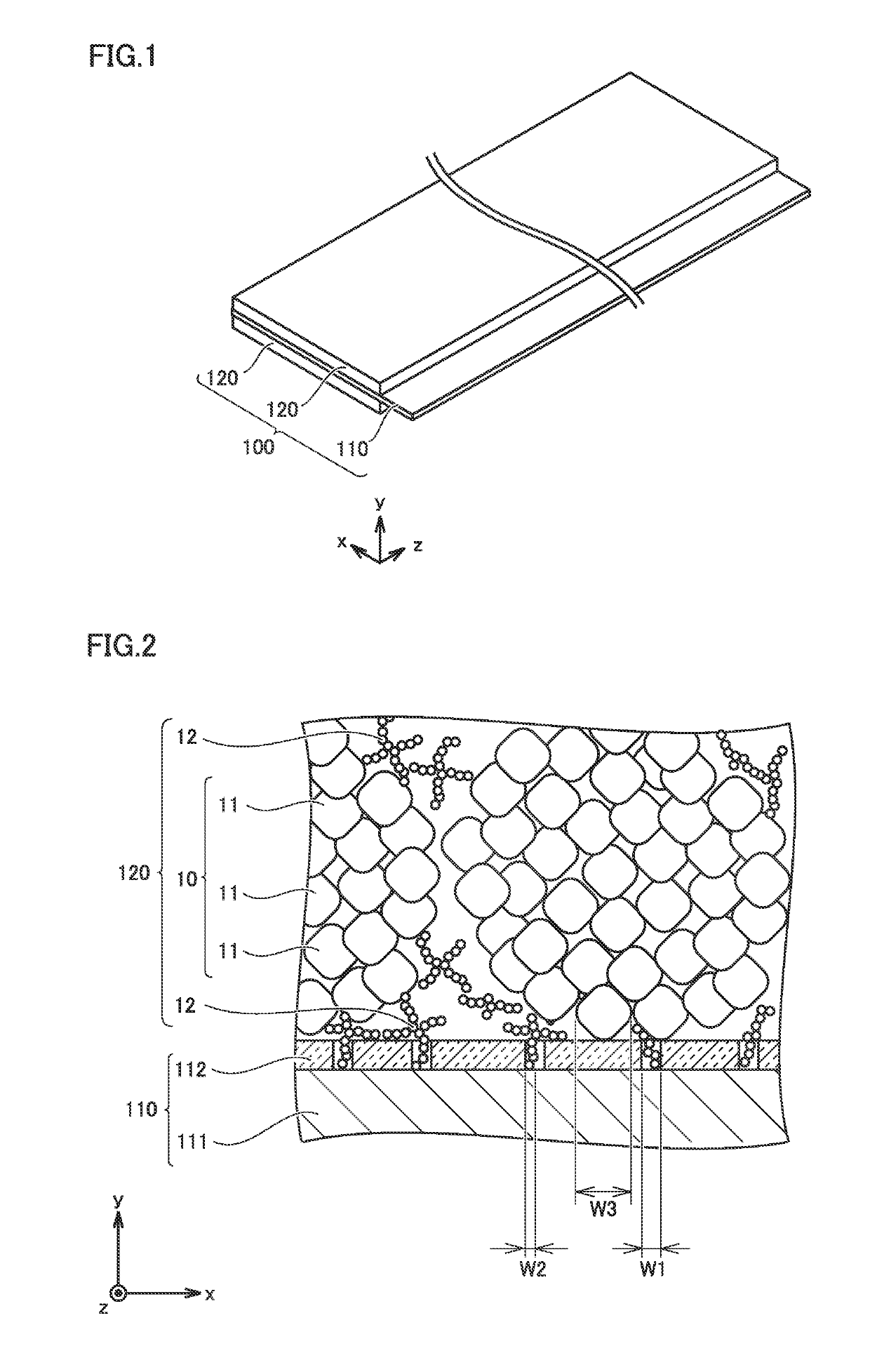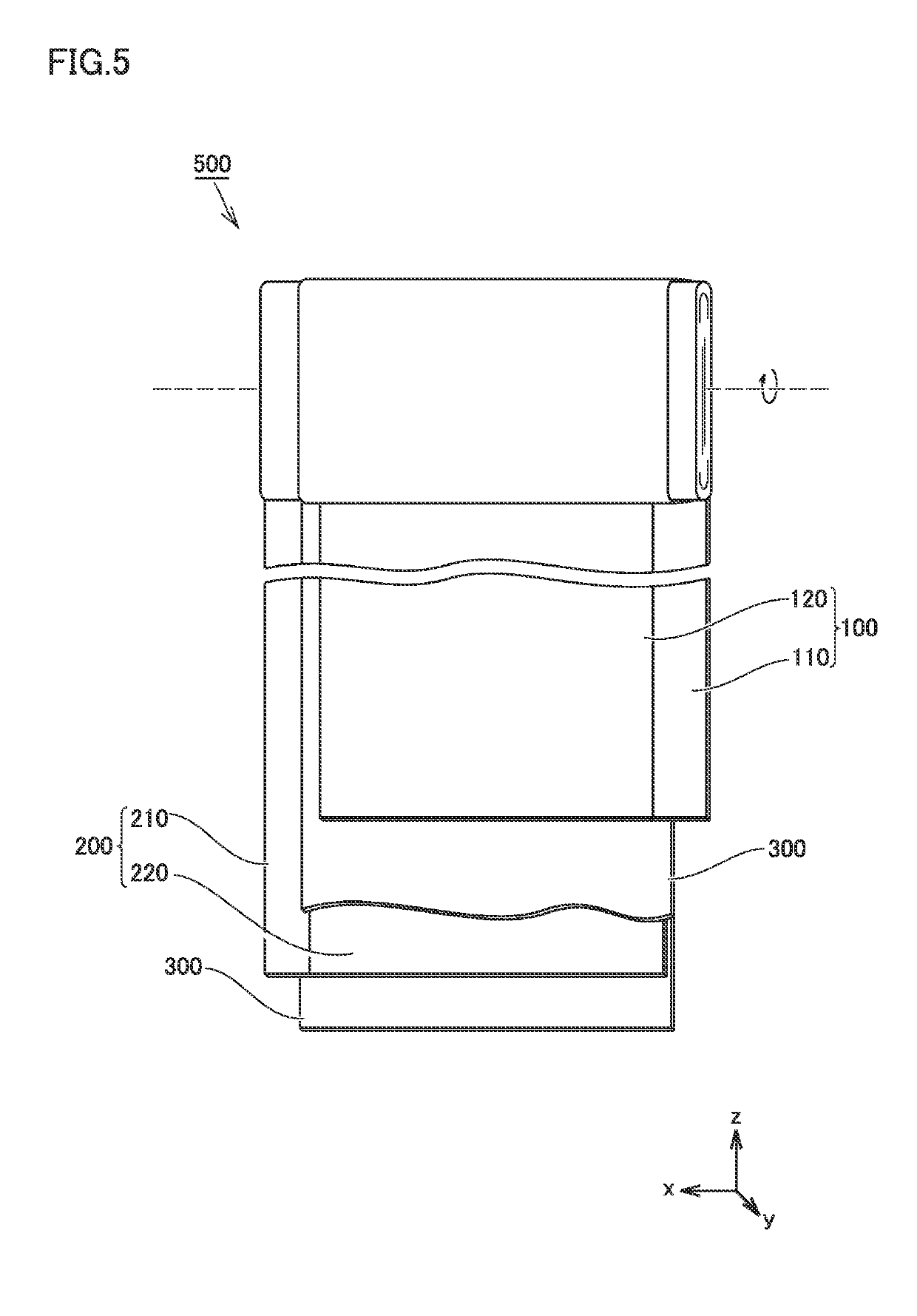Positive electrode, non-aqueous electrolyte secondary battery, and method of producing positive electrode
a technology of non-aqueous electrolyte and secondary batteries, which is applied in the manufacture of secondary cells, cell components, electrochemical generators, etc., can solve the problems difficult formation of thin intermediate layers, and more readily agglomerating of particles, so as to achieve the effect of reducing heat generation
- Summary
- Abstract
- Description
- Claims
- Application Information
AI Technical Summary
Benefits of technology
Problems solved by technology
Method used
Image
Examples
example 1
[0125]1-1. (a) Preparation of Al Foil
[0126]Al foil 111 (Alloy No. 1085, with a thickness of 15 μm) was prepared. The width dimension of Al foil 111 (dimension in the x-axis direction in FIG. 1) was 130 mm.
[0127]1-2. (b) Hydrothermal Treatment
[0128]A hydrothermal-treatment bath was prepared. As a hydrothermal-treatment liquid, ion-exchanged water was used. The temperature of the hydrothermal-treatment liquid was 90° C. In the hydrothermal-treatment liquid, Al foil 111 was immersed for two minutes. Thus, Al oxide hydrate film 112 was formed on a surface of Al foil 111. In other words, positive electrode current collector 110 was formed. Al oxide hydrate film 112 had a thickness of 180 nm.
[0129]1-3. (c) Disposition of Conductive Material and Positive Electrode Active Material
[0130]The materials described below were prepared.
[0131]Positive electrode active material 10: lithium-nickel composite oxide
[0132]Conductive material 12: acetylene black (powder)
[0133]Binder: PVdF
[0134]Solvent: NM...
examples 2 to 14
[0140]Positive electrode 100 was produced in the same manner as in Example 1 except that hydrothermal treatment conditions were changed as specified in Table 1 below. In Examples 12 to 14, dilute sulfuric acid was used as the hydrothermal-treatment liquid. The dilute sulfuric acid was prepared by adding sulfuric acid to ion-exchanged water.
PUM
| Property | Measurement | Unit |
|---|---|---|
| Fraction | aaaaa | aaaaa |
| Fraction | aaaaa | aaaaa |
| Thickness | aaaaa | aaaaa |
Abstract
Description
Claims
Application Information
 Login to View More
Login to View More - R&D
- Intellectual Property
- Life Sciences
- Materials
- Tech Scout
- Unparalleled Data Quality
- Higher Quality Content
- 60% Fewer Hallucinations
Browse by: Latest US Patents, China's latest patents, Technical Efficacy Thesaurus, Application Domain, Technology Topic, Popular Technical Reports.
© 2025 PatSnap. All rights reserved.Legal|Privacy policy|Modern Slavery Act Transparency Statement|Sitemap|About US| Contact US: help@patsnap.com



